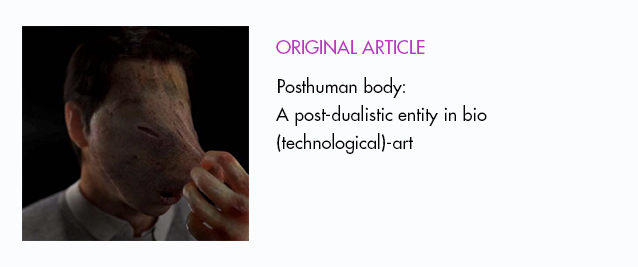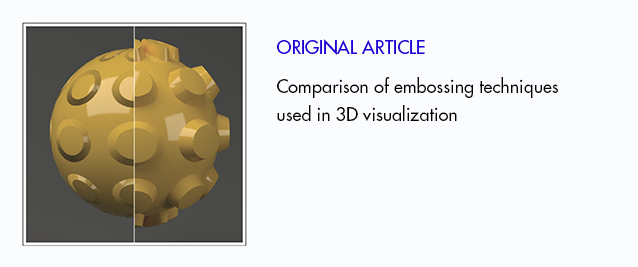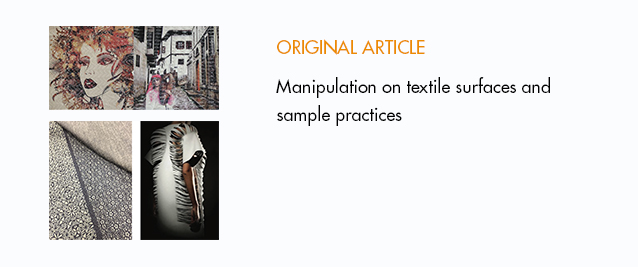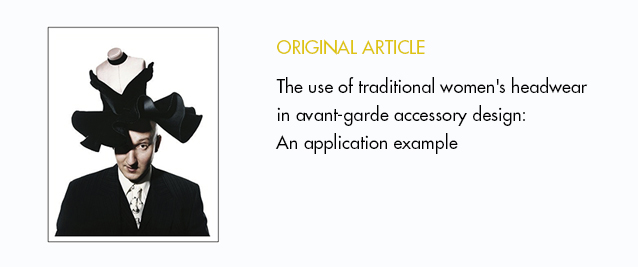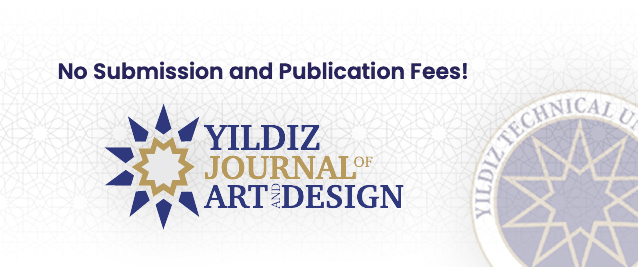Abstract
Textile art has taken its place in plastic arts, with the beginning of the revival of the value given to handcraft of the power of achieving high art status through the teaching of art movements such as Arts&Crafts, Art Nouveau and Bauhaus school, which laid the foundation for the emergence of wearable art. Manipulation practices on textile surfaces are works where craft processes are intense and require practice knowledge and skill of many textile techniques. This aspect of surface manipulations is closely related to philosophy of wearable art, which argues that craft cannot be separated from art. The traditional textile techniques and empirical methods used in manipulation also serve the view of wearable art that glorifies craft. Consid-ering the past and current approaches of wearable art, it becomes clear that one of the most important points of art clothing is the narrative and conceptual aspect of the work created. When we look at the clothing works of textile artists, which have high art status, they construct their surface designs with the conceptuality they create with the concern for the message to be given to the viewer, like an artist and her canvas. It is seen that they focus on handcrafted and mixed media works on the surface, and in clothing forms, they prefer the “T” shaped kimono form, which best reflects the surface like a canvas. In the study carried out in this direction, the techniques used were examined through the manipulation surfaces of artists and designers, the stories they constructed on the surface were examined, and the clothing forms preferred for exhibition were emphasized. Manipulation stories, which started with free technique in art clothing practices, were carried out in accordance with the determined theme in the following process, empirical techniques were mainly included, and fabric prefernces were planned to be completely in line with the chracteristics of the story. In this context, the aim of the practices revealed in the study was to transform the textile techniques used in manipulation into a narrative design with the mixed technique method on the surface and to present them with empirical pattern processes, suitable for wearable art forms, without interfering the surface design with the least possible use of cuts and stitches.
Tekstil sanatının plastik sanatlar içerisinde yer edinmesi, giyilebilir sanatın ortaya çıkışına zemin hazırlayan Arts&Crafts, Art Nouveau ve Bauhaus ekolü gibi sanat hareketlerinin öğ-retisiyle yüksek sanat statüsüne erişebilmenin gücünün el emeğine verilen değerin yeniden yaşatılmaya başlanması ile olmuştur. Tekstil yüzeylerinde manipülasyon uygulamaları zanaat süreçlerinin yoğun olduğu, birçok tekstil tekniğinin uygulama bilgi ve becerisini gerektiren çalışmalardır. Yüzey manipülasyonlarının bu yönü zanaatın sanattan ayrı tutulamayacağını savunan giyilebilir sanat felsefesi ile yakın ilişki içerisindedir. Manipülasyonda kullanılan gele-neksel tekstil teknikleri ve deneysel yöntemler, giyilebilir sanatın el emeğini yücelten görüşüne de hizmet etmektedir. Giyilebilir sanatın geçmiş ve güncel yaklaşımları dikkate alındığında sanatsal giyimin en önemli noktalarından birinin de ortaya konan eserde kurgulanan hikaye-sel anlatı ve kavramsallık yönü olduğu ortaya çıkmaktadır. Tekstil sanatçılarının yüksek sanat statüsündeki giyim eserleri bakıldığında, bir sanatçı ve tuvali gibi izleyiciye verilmek istenen mesaj kaygısıyla oluşturdukları kavramsallık ile yüzey tasarımlarını kurgulamaktadırlar. Yü-zey üzerinde el işi ve karışık teknik çalışmalarına ağırlık verdikleri ve giysi formlarında ise yüzeyi tuval gibi en iyi yansıtan “T” biçimli kimono formunu tercih ettikleri görülmektedir. Bu doğrultuda yürütülen çalışmada, kullanılan teknikler sanatçı ve tasarımcıların manipülas-yon yüzeyleri üzerinden incelenmiş, yüzey üzerinde kurguladıkları hikayeler irdelenmiş ve sergilemede tercih edilen giysi formları üzerinde durulmuştur. Sanatsal giyim uygulamala-rında serbest teknik ile başlanılan manipülasyon çalışmaları ilerleyen süreçte belirlenen tema özelinde yürütülmüş, deneysel tekniklere ağırlıklı olarak yer verilmiş ve kumaş tercihleri de tamamen hikaye özelliklerine uygun olacak şekilde planlanmıştır. Bu bağlamda çalışmada or-taya konan uygulamalarda amaç, manipülasyonda kullanılan tekstil tekniklerini yüzey üze-rinde karışık teknik yöntemiyle hikayesel bir tasarım haline dönüştürmek ve giyilebilir sanat formlarına uygun, deneysel kalıp süreçleriyle, mümkün olan en az kesik ve dikiş kullanımıyla yüzey tasarımına müdahale etmeden sunmak olmuştur.



